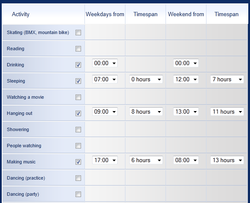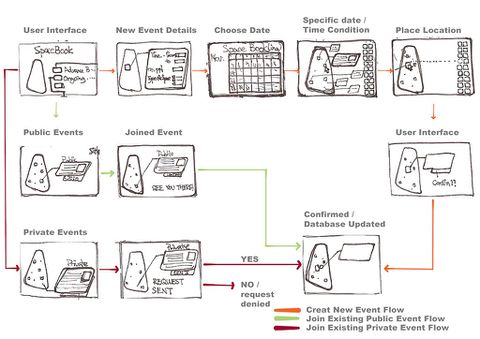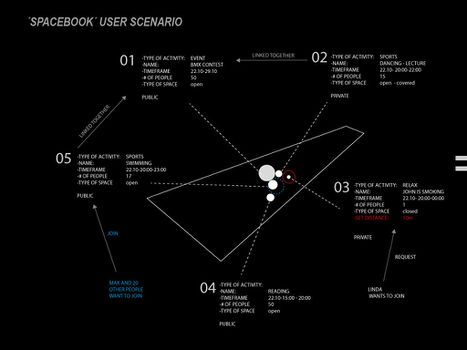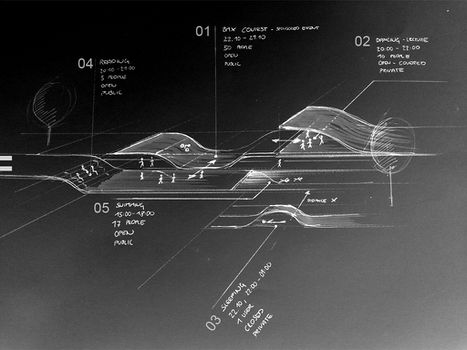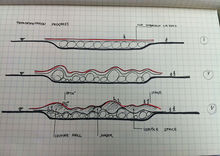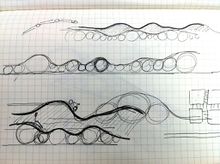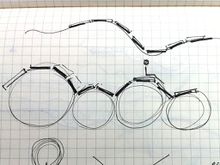atom02:Home
(→EXPERTS) |
(→INVOLVED PEOPLE) |
||
| Line 189: | Line 189: | ||
| − | === | + | === USERS === |
The sponsor can be a joint partnership between TU Delft, the municipality of Delft and a third investor - contractor. | The sponsor can be a joint partnership between TU Delft, the municipality of Delft and a third investor - contractor. | ||
| Line 195: | Line 195: | ||
=== EXPERTS === | === EXPERTS === | ||
| − | Andrei Stoiculescu | + | IT: Andrei Stoiculescu (computer scientist and master student in AI at Rijksuniversiteit Groningen) & S. Hagemann (Software Engineer) |
| − | + | Interfaces: Walter Aprile & Aadjan van der Helm | |
| − | + | Structures: Michela Turrin | |
| − | + | === BUILDING SCHEME === | |
| − | + | ||
| − | + | ||
| − | + | ||
| − | === | + | |
| − | + | ||
| − | + | ||
| − | + | ||
| − | + | ||
| − | + | ||
| − | + | ||
| − | + | ||
| − | + | ||
| − | + | ||
| − | + | ||
| − | + | ||
| − | + | ||
| − | + | ||
| − | + | ||
| − | + | ||
| − | + | ||
| − | + | ||
| − | + | ||
| − | + | ||
| − | + | ||
| − | + | ||
| − | + | ||
| − | + | ||
| − | + | ||
| − | + | ||
| − | + | ||
| − | + | ||
| − | + | ||
| − | + | ||
| − | + | ||
| − | + | ||
| − | + | ||
| − | + | ||
=SUSTAINABILITY= | =SUSTAINABILITY= | ||
Revision as of 11:02, 11 October 2011
Contents |
"SPACEBOOK or HOW CAN A SITE SUSTAIN ACTIVITY 24/7 ?"
THE SITE
Problems:
- The site is devoid of human activity
- There is no landscaping or landscaping attributes (e.g. lamps, benches)
- The lush green border around the site works like a fence during summer, it blocks the view and inhibits human presence
- The site is a vacuum in an area full of program.
CONCEPT STATEMENT
"...On successful city streets, people must appear at different times...or else parks will be used only sporadically...and this simplification of use - meaning fewer users, with fewer different purposes and destinations at hand - feeds upon itself...a kind of unbuilding, or running-down process is set in motion...the infusion would obviously have to result in the presence of maximum numbers of persons at the times when the district needs them most for time balance..."
This is a collage from Jacobs' book. The book promotes an almost volatile, effervescent city life of streets lined with mixed-uses that create activity at different times in the day which leads to a constant presence of users / inhabitants. All this makes for a diverse and vital city life where even though we are strangers we step out of our individuality and participate in the public life.
We wish to build upon this.
A website works 24/7 and is continuously evolving; e.g. a wiki page where the user is free to add content and to make it public worldwide. By taking the concept of hyperspace we propose a site which will permit a widespread and ever-changing spectrum of activities throughout the whole of the day. The site will be linked with an online website for booking activities, thus it will be continuously changing and allow the interweaving of human interaction (a lecture hall, next to a performance space next to individual study-rooms, etc). This functionality will create a trace of human activity; a new user will have the option of seeing the previous activity and form. Just as time leaves a trace into a building’s physicality and identity,so will continuous activity leave a trace on the site.
See also:
The Death and Life of Great American Cities
DESIGN CHALLENGE
To extend the notion of an online social community by providing a user-customizable space that will enhance that community. Thus the concept of Spacebook: (where) everybody can see the activities on the site, the users can join activities that are or will be taking place, create their new activities and (physically) link them with other activities. A new activity loop is born.
STEP 01: ONLINE QUESTIONNAIRE
We have created an online questionnaire. Its goal is to tell us what users want and when they want to do it.
Having this information will help us to create an estimate on the spread of activities throughout the day.
STEP 02: SYSTEM SCHEMATICS
We are thinking of making Spacebook a part of Facebook so to tap into the already gigantic user database.
'Interface Diagram'
'User - Interface'
'User Scenarios'
* STEP 03: PHYSICAL SYSTEM:
See also the progression on creating the site mechanism or:
INVOLVED PEOPLE
USERS
The sponsor can be a joint partnership between TU Delft, the municipality of Delft and a third investor - contractor.
EXPERTS
IT: Andrei Stoiculescu (computer scientist and master student in AI at Rijksuniversiteit Groningen) & S. Hagemann (Software Engineer)
Interfaces: Walter Aprile & Aadjan van der Helm
Structures: Michela Turrin
BUILDING SCHEME
SUSTAINABILITY
We suspect the traffic around the site to be an untapped source for energy.
See also:

